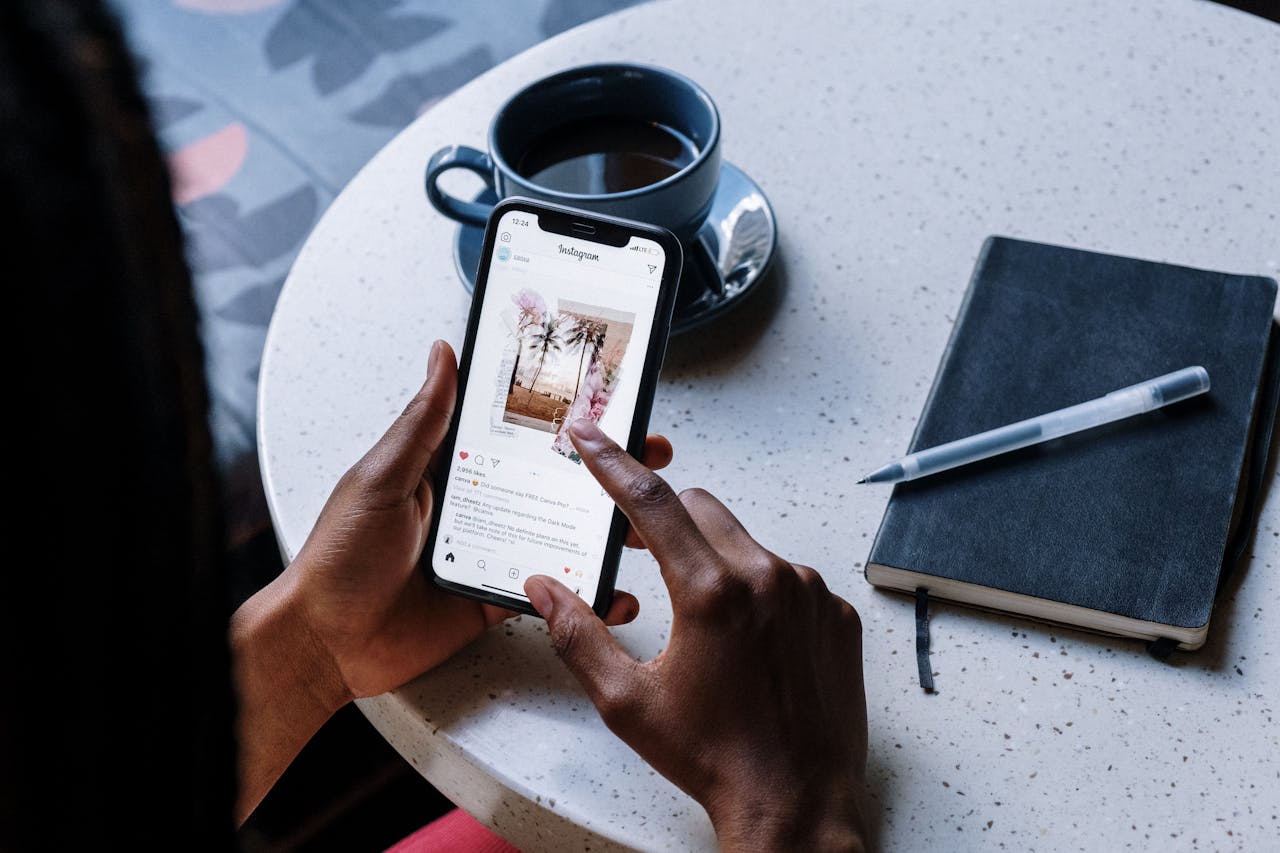Track Instagram Metrics for eCommerce Growth
Published on 15th of January 2021In this day and age, having an Instagram page for your B2C e-commerce business is almost as important as breathing.
You could walk up to someone, trying to market your store merch, and the first question they would ask is, “what is your Instagram handle?”
Customers want visual proof of what you’re selling, especially when they can’t see it in person.
While websites are a great way to showcase and sell your wares, Instagram is more convenient for mobile phone users. You can scroll through a catalog much faster on mobile Instagram than you can on a mobile-friendly site.
Not to mention, there are over one billion Instagram users currently, so you have an incredibly large customer base to market to.
When it comes to digital marketing, Instagram is easily becoming home to everything e-commerce (even with the TikTok threat).
So how do you track the growth of your eCommerce store on Instagram? We’ve compiled a few metrics you can use to monitor the result of your IG marketing efforts and increase conversions on the platform.
Once you’ve mastered these assessment measures, you can single-handedly revolutionize the growth of your brand or business.
Contents
6 essential metrics to track your success on Instagram
Side note: Most of these features are only available on business accounts.
1. Growth rate
Many think having a large following automatically equals sales. This is far true. While it can improve the credibility of your brand in the public eye, it doesn’t necessarily mean you’re making sales or conversions.
A smaller but more engaged following is always more valuable than a large following that doesn’t interact.
On the other hand, the growth rate is a great way to monitor the expansion of your business. It tells you when your posts are catching the eyes of new followers all over the world.
Instagram’s Followed and Unfollowed tab is useful in showing you what content your followers are responding to. If you experience an increase in unfollowers, it’s smart to re-examine the last few posts to see what went wrong.
When your growth rate increases positively, this insight will help you understand what content your followers love to see. Knowing your growth rate is important when evaluating your Instagram performance.
For instance, if you have 100 followers, and each month you get 10 new followers, it gives you a growth rate of 10%. But when you have up to 1000 followers but only add 10 followers each month, it means your growth rate is at 1%, which is poor.
This metric shows that your growth is being stagnated, and clearly, you need to try new strategies.
2. Reach
.jpg) When trying to improve your brand’s performance, “reach” is one metric you must excel in. It refers to the number of accounts that have seen your post, revealing the level of attention each post is attracting.
When trying to improve your brand’s performance, “reach” is one metric you must excel in. It refers to the number of accounts that have seen your post, revealing the level of attention each post is attracting.
Ecommerce businesses focus on this metric to increase brand awareness. And you start by checking the reach on your last 5 posts—this gives you an idea of the average reach you currently have.
That way, you know when your posts are either performing or underperforming. It is important to note that reach differs from impressions.
If someone views your post, it counts as one reach, regardless of how many times they view it. When it comes to impressions, each view counts even if it is done by one account.
A useful way to improve your reach is to include a captivating CTA (call-to-action) at the end of your posts and use engaging and relatable hashtags.
3. Instagram Stories engagement
IG Stories are another way to interact and get closer to your followers—whether text, photos, or videos. The native tool on Instagram is incredibly handy when it comes to tracking Stories engagement.
You know how many people see your stories, check your profile, reply to the story, plus the number of people that drop off after seeing the first few posts.
You can use the native tool to examine what kind of content holds the attention of your audience and what they are most likely to engage with.
You can compare your watch-through rate to your drop-off rate at the close of the 24 hours lifespan, to see where you lost the attention of your followers.
Moreover, check what content got you the most replies and profile visits. This can help you create a roadmap of content for your media strategy.
-
Watch through rate: The number of people who watch your stories to the end (in cases where you have more than one).
-
Drop off rate: The number of people who exited after the first few posts and didn’t reach the end.
4. Comments on posts
 Comments are one of the best ways to judge the growth of your Instagram page. The more comments you get on your posts, the more engagement you have to show.
Comments are one of the best ways to judge the growth of your Instagram page. The more comments you get on your posts, the more engagement you have to show.
They show that you're not just putting out content, people are resonating with it.
If you notice your comments going down, examine your recent uploads to figure out why your audience didn’t interact.
It's good practice to try different content strategies and use varied hashtags to give your posts a wider reach.
5. Instagram Saves
The Save feature lets you bookmark that timeless post you just casually saw on the TL. With the new trend of Instagram hiding likes on posts, saves are becoming the next best metric to monitor.
With a simple tap of the button at the bottom right, users can save a post to be viewed later and even group their saves in categories.
The Instagram algorithm responds to these saves. The more people who save a post of yours, the more frequently Instagram will show it to other people. Factor this metric in when creating content for your IG pages.
Tip: Upload content that can be saved for future use—such as carousels, quotes, how-to videos and infographics, and even funny videos.
These are just some of the content that brings in the most saves. You should also consider a content calendar for your Instagram page.
6. Engagements per follower
 Over 69% of Instagram posts don’t get seen by users (and we have the algorithm to thank—no, curse—for this). Regardless of the number of followers you have, it won't mean anything if people can’t see your posts, i.e., no engagements.
Over 69% of Instagram posts don’t get seen by users (and we have the algorithm to thank—no, curse—for this). Regardless of the number of followers you have, it won't mean anything if people can’t see your posts, i.e., no engagements.
So, the engagement rate tracks the direct response of your audience to the content you put out. You get to see who is sharing, saving, liking, and commenting on your posts.
Checking your engagements per follower tells you how much interest your followers are showing in your posts.
To calculate the engagements, try not to look at just the numbers. Calculate your engagements weekly by adding the likes and comments you receive during a period and dividing that number by the followers you gain during that period.
Take, for example, you received 650 likes and comments and gained 40 followers in the same timeframe—that's a rate of 16.25%.
And when calculating the engagement rate of your videos, use likes and reach instead of video views.
7. [Bonus] Referral traffic
If you're linking to your website from your Instagram page, this one shows the influence the platform has on your web traffic.
You can track referral traffic by placing a trackable link in your bio, Stories, and posts (using UTM tracking in Google Analytics).
Note: Our detailed guide on how to track referral traffic from Instagram is coming soon.
Start monitoring your IG performance today
There’s no doubt that Instagram is a great way to market your business, making it a must-have in your e-commerce arsenal.
If you’re ready and committed to going into this world of likes and captions, these are the metrics you need to use in tracking your growth.
And you can use additional tools for more in-depth reports on the progress of your IG marketing. (A simple Google search will help.)


